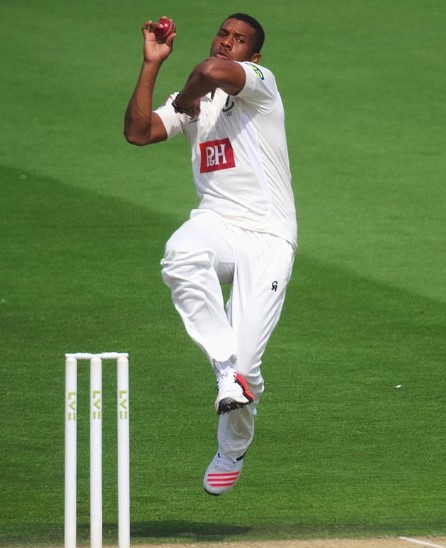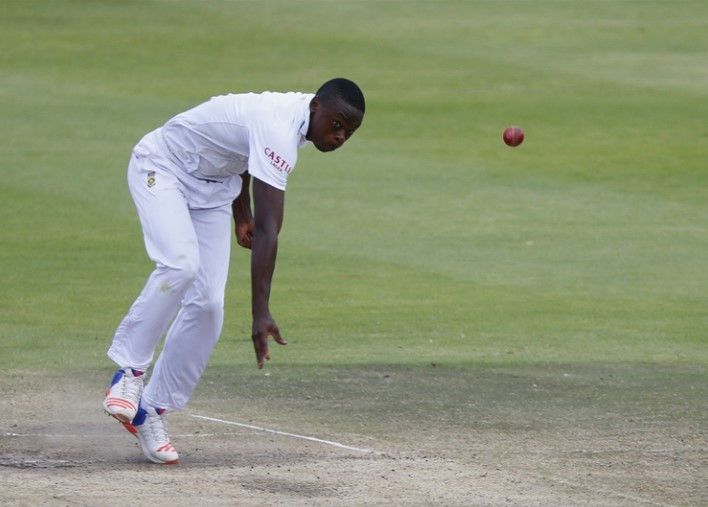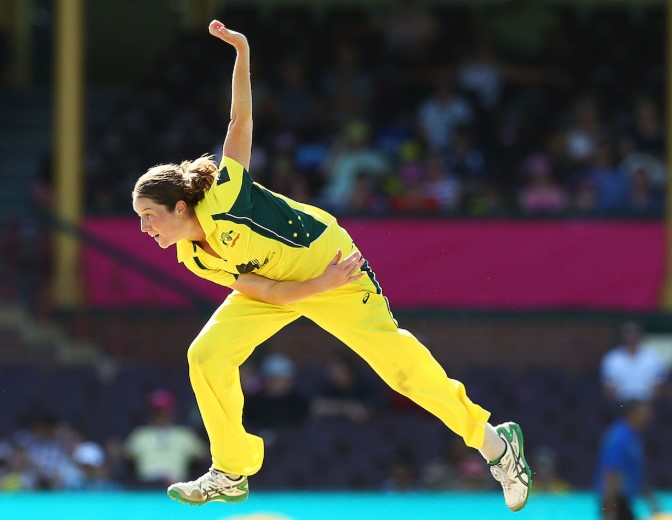Bowl: Cricket is a game defined by skill, strategy, and athleticism. Among the various aspects of the game, fast bowling stands out as one of the most exhilarating and physically demanding. The speed at which a bowler delivers the ball can make a significant difference to the outcome of a match. But how fast can a bowler truly bowl in cricket? And what are the limits of human capability when it comes to generating speed in this sport? In this article, we’ll explore the physics of fast bowling, the record-breaking speeds in cricket, the factors that influence bowling speed, and the evolving limits of fast bowling.
The Physics Behind Fast Bowling

Fast bowling in cricket involves a combination of speed, power, and precision. The goal of a fast bowler is to generate as much speed as possible while maintaining accuracy. Speed is generated through a series of complex physical movements, from the run-up to the release of the ball.
Key Elements Of Fast Bowling:
Run-up: The bowler starts with a sprint down the pitch to build momentum.
Delivery stride: The bowler takes a final stride before releasing the ball, generating energy and speed.
Rotation and wrist position: The bowler’s wrist action plays a crucial role in the final release, allowing for a clean, fast delivery.
The speed of the ball depends on how much kinetic energy the bowler can transfer into it, and the more force they can apply, the faster the ball will travel.
Fastest Recorded Speeds In Cricket
Over the years, cricket has witnessed some astonishing feats of pace. The record for the fastest delivery ever bowled is held by Shoaib Akhtar, a Pakistani cricketer who delivered a ball at 161.3 km/h (100.23 mph) during the 2003 Cricket World Cup against England. However, many bowlers have come close to this record, with speeds exceeding 150 km/h (93 mph) consistently recorded in top-level international cricket.
Let’s break down some of the fastest bowlers in cricket history:
| Bowler | Country | Fastest Recorded Speed | Match |
|---|---|---|---|
| Shoaib Akhtar | Pakistan | 161.3 km/h (100.23 mph) | 2003 Cricket World Cup |
| Brett Lee | Australia | 161.1 km/h (100.07 mph) | 2005 vs. New Zealand |
| Glenn McGrath | Australia | 156.8 km/h (97.4 mph) | 1999 vs. New Zealand |
| Dale Steyn | South Africa | 156.7 km/h (97.3 mph) | 2008 vs. New Zealand |
| Curtly Ambrose | West Indies | 156.0 km/h (96.9 mph) | 1993 vs. Australia |
While these bowlers represent some of the fastest deliveries on record, many fast bowlers in modern cricket consistently bowl at speeds in excess of 145 km/h (90 mph).
The Speed Limits: Can Humans Bowl Faster?

While the fastest bowlers can reach speeds above 160 km/h (100 mph), one might wonder whether this is the physical limit of human ability. Several factors come into play when determining how fast a human can bowl:
Biomechanics of Fast Bowling: Fast bowling requires optimal coordination of the arm, wrist, and body. The bowler must transfer the energy from the lower body (legs and hips) to the upper body (shoulder and arm) efficiently to maximize speed. This is a highly specialized skill and demands perfect timing and technique.
Physiological Constraints: The human body has physical limits. Fast bowling puts enormous strain on a bowler’s shoulder, elbow, and back. The forces generated during delivery are immense, and maintaining such speeds over an entire career is rare due to the toll it takes on the body. A bowler’s fitness, flexibility, and strength play vital roles in sustaining speed.
Technological Factors: The accuracy of speed measurement has improved with advanced technologies like speed guns and Doppler radar. These tools ensure that we can measure the exact speed of deliveries, but they also provide insight into how fast bowlers are pushing the limits of their speed.
Despite these constraints, research and experimentation with biomechanics, along with improved fitness regimens, have allowed fast bowlers to consistently push the boundaries of speed. However, it’s important to note that while bowlers may get faster with new techniques and training, the body’s limitations will eventually set a ceiling.
Key Factors Influencing Bowling Speed

Various factors impact a bowler’s ability to bowl at high speeds. Understanding these factors helps shed light on why certain bowlers excel at fast bowling.
1. Physical Fitness
Fast bowlers need to be in peak physical condition. They must have strong legs for the run-up, powerful core muscles for balance, and robust upper body strength for delivering the ball at high speeds.
2. Technique And Delivery Mechanics
A bowler’s technique directly impacts their speed. Small adjustments in wrist position, follow-through, and body posture can make a big difference in the amount of pace generated.
3. Genetics
Some fast bowlers are naturally endowed with a high level of athleticism, flexibility, and height. Taller bowlers with long strides can often generate more momentum, which translates into faster deliveries. For example, Shoaib Akhtar’s height and powerful build gave him an advantage in generating pace.
4. Training And Conditioning
Bowlers undergo rigorous training programs, focusing on strength, agility, endurance, and flexibility. Core strength and lower body power are particularly important, as they provide the base for generating speed.
5. Surface Conditions
The type of pitch and the weather conditions can also affect bowling speed. Hard, bouncy pitches often help fast bowlers generate more pace, while slower, softer wickets may reduce the effectiveness of fast deliveries.
Records And Milestones In Bowling Speed
As cricket has evolved, so has the nature of fast bowling. New milestones continue to be set, and bowlers from different generations continue to make their mark. Let’s take a look at some significant speed milestones:
| Bowler | Country | Record Speed | Year |
|---|---|---|---|
| Shoaib Akhtar | Pakistan | 161.3 km/h | 2003 |
| Brett Lee | Australia | 161.1 km/h | 2005 |
| Mark Wood | England | 156.1 km/h | 2017 |
| James Anderson | England | 154.9 km/h | 2016 |
| Jofra Archer | England | 154.0 km/h | 2019 |
These milestones show the competitive nature of fast bowling, with new bowlers pushing the envelope each decade. Notably, England’s Jofra Archer and Mark Wood have been among the modern bowlers pushing the boundaries of speed in the post-2000s era.

Training To Bowl Fast: How Can Bowlers Improve Their Speed?
Improving bowling speed involves a combination of proper technique, physical conditioning, and strategic planning. Here’s how bowlers can focus on increasing their speed:
1. Strength Training
Fast bowlers require strong muscles, particularly in the legs, back, and shoulders. Strengthening the core and improving explosiveness will enable the bowler to generate more power during their delivery stride.
2. Plyometric Exercises
Plyometric training (jumping and bounding exercises) helps bowlers improve their leg strength and explosiveness, allowing for better power transfer when delivering the ball.
3. Flexibility
Being flexible, especially in the shoulder and wrist, can help a bowler generate more speed with less strain on the body. Stretching exercises and yoga can aid in improving flexibility.
4. Speed-Specific Drills
Bowling drills that focus on increasing speed, such as sprints, bounding, and overspeed training, can help bowlers enhance their delivery speed.
Fast bowling is an art, and the pursuit of bowling at high speeds has always been a hallmark of cricket’s most exciting players. With the fastest recorded deliveries approaching 160 km/h (100 mph), the limits of human speed in cricket are constantly tested, but physical constraints will always set boundaries. However, continued advancements in training, biomechanics, and fitness are enabling bowlers to get closer to the maximum speed human bodies can achieve.
As cricket continues to evolve, one thing is clear: the pursuit of speed will remain a cornerstone of the sport, and bowlers will continue to push the limits in the quest for that perfect, unplayable delivery.

